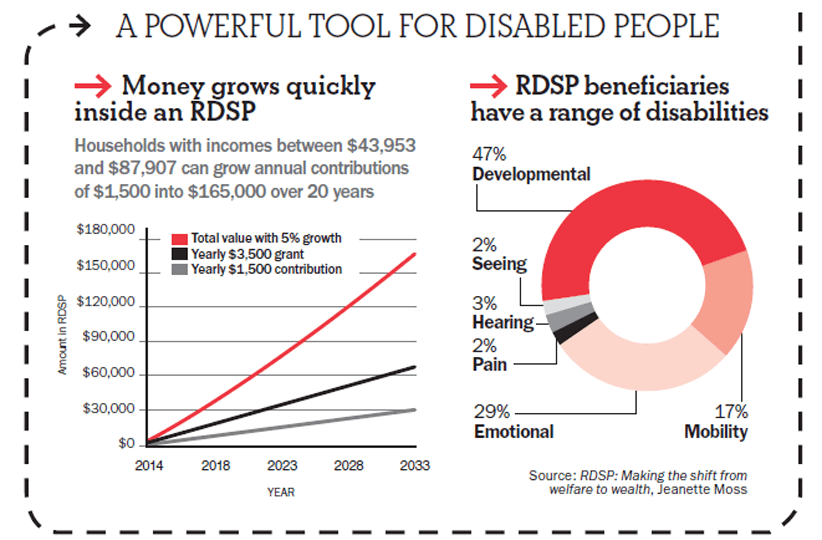If you or a loved one has a disability, the RDSP could be the perfect way to secure a solid financial future.

As the single mother of a disabled daughter, 52-year-old Mississauga resident Rita Kerkmann worries about what will happen after she’s gone. Her teenage daughter Jodi is developmentally delayed and has autism, and Kerkmann wants her to have the financial resources for a good quality of life. “Unfortunately, a lot of kids aren’t getting quality support these days,” she says. “A lot of them are just watching TV, and that’s not what I want for her.”
Jodi will need around-the-clock care for the rest of her life, and it won’t be cheap. “There aren’t a lot of day programs out there for the disabled. Even if you find one, you may be paying privately for it and the going rate is around $80 per day.” Kerkmann also wants to make sure Jodi can enjoy activities in the evening. “My daughter’s a big football fan. Like any other person, she enjoys live games every once in a while, which cost money. She deserves to be out in the community and enjoying activities.”
That’s why the moment Canada’s Registered Disability Savings Plan (RDSP) became available in 2008, Kerkmann didn’t waste a minute going to her bank to set up an account. She knew the lucrative federal program would go a long way to ensuring Jodi would thrive long after she was gone. “It’s sad that more people aren’t using RDSPs,” she says.
Kerkmann is right. Despite this tool’s ability to improve the lives of people with disabilities, only 78,000 of 500,000 eligible Canadians have opened an RDSP since the program’s inception. This is a disconcerting fact given that the disabled often face difficulty seeking employment and often earn lower wages when they are working.